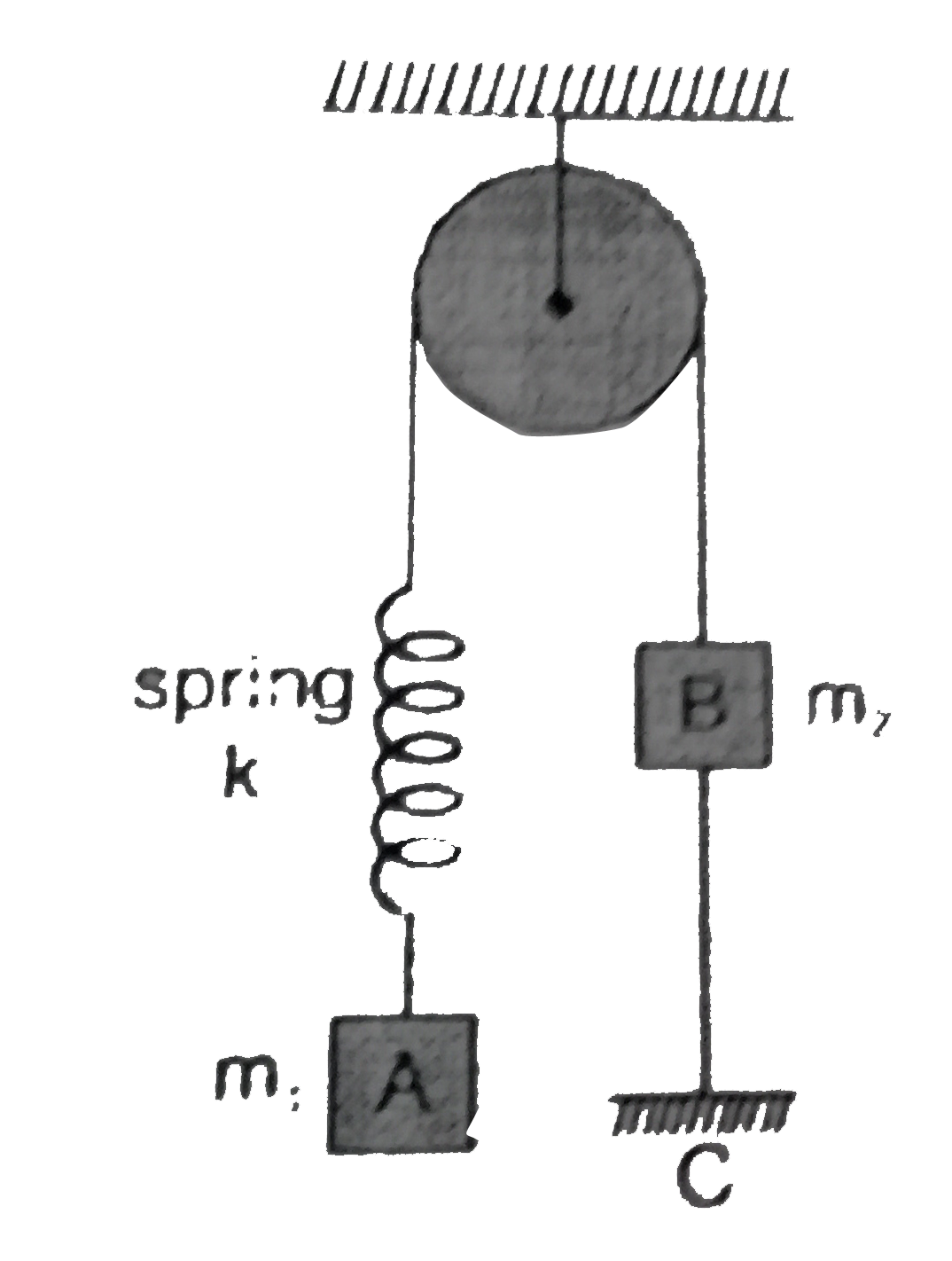
In the system in the figure m1>m2 system is held at rest by thread BC. Just after the thread BC is burnt:
acceleration of m2 will be upwards
magnitude of acceleration of both blocks will be equal to (m1+m2m1+m2)g
acceleration of m1 will be equal to zero
magnitude of acceleration of two blocks will be non-zro and unequal.
The correct Answer is:A, C
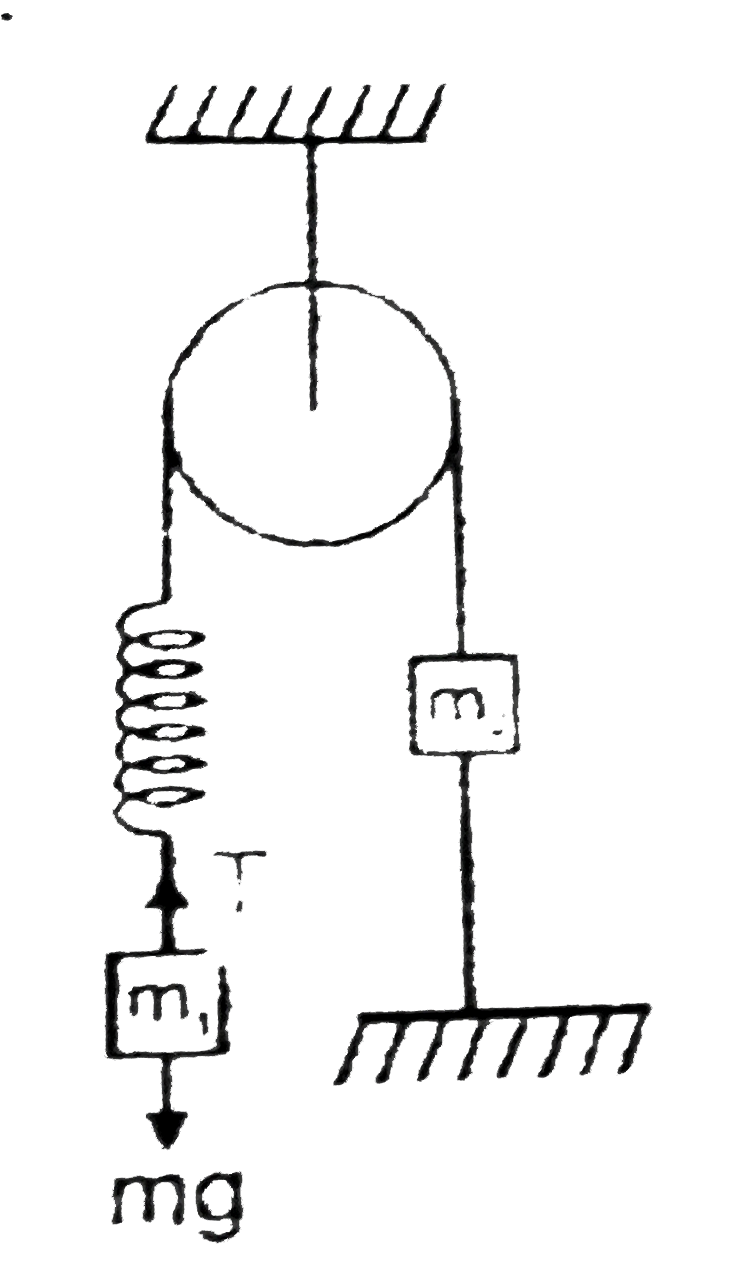
When thred is burnt, tension in spring remains same =m1g.
m1g−m2gm2a
g=(m1−m2m2) a= upwards
for m1 a=0
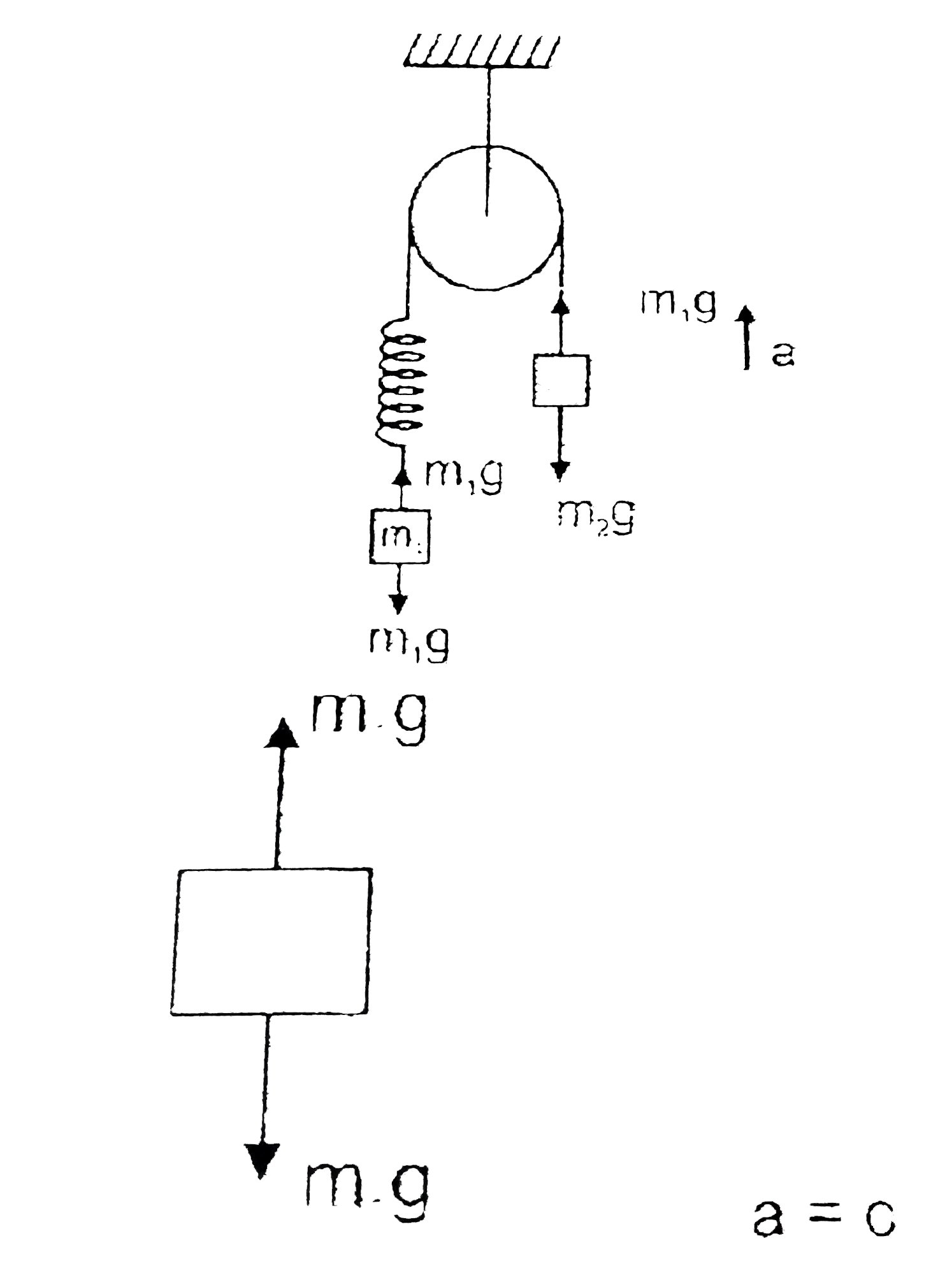
Topper's Solved these Questions
- TEST PAPERSBOOK - RESONANCECHAPTER - TEST PAPERSEXERCISE - PT-01
30 Videos
- TEST PAPERSBOOK - RESONANCECHAPTER - TEST PAPERSEXERCISE - Pt-02
30 Videos
- TEST PAPERSBOOK - RESONANCECHAPTER - TEST PAPERSEXERCISE - PART - II PHYSICS
107 Videos
- SIMPLE HARMONIC MOTION BOOK - RESONANCECHAPTER - SIMPLE HARMONIC MOTION EXERCISE - Advanced Level Problems
13 Videos
- TEST SERIESBOOK - RESONANCECHAPTER - TEST SERIESEXERCISE - PHYSICS
127 Videos
Similar Questions
Find the mass m in the figure for the system to be at rest
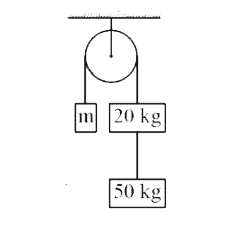
View SolutionA smooth rod is fixed at an angle α to the horizontal. A small ring of mass m can slide along the rod. A thread carrying a small sphere of mass M is attached to the ring. To keep the system in equilibrium, another thread is attached to the ring which carries a load of mass m0at its end (see figure). The thread runs parallel to the rod between the ring and the pulley. All threads and pulley are massless.
(a) Find m0 so that system is in equilibrium.
(b) Find acceleration of the sphere M immediately after the thread supporting m0 is cut.
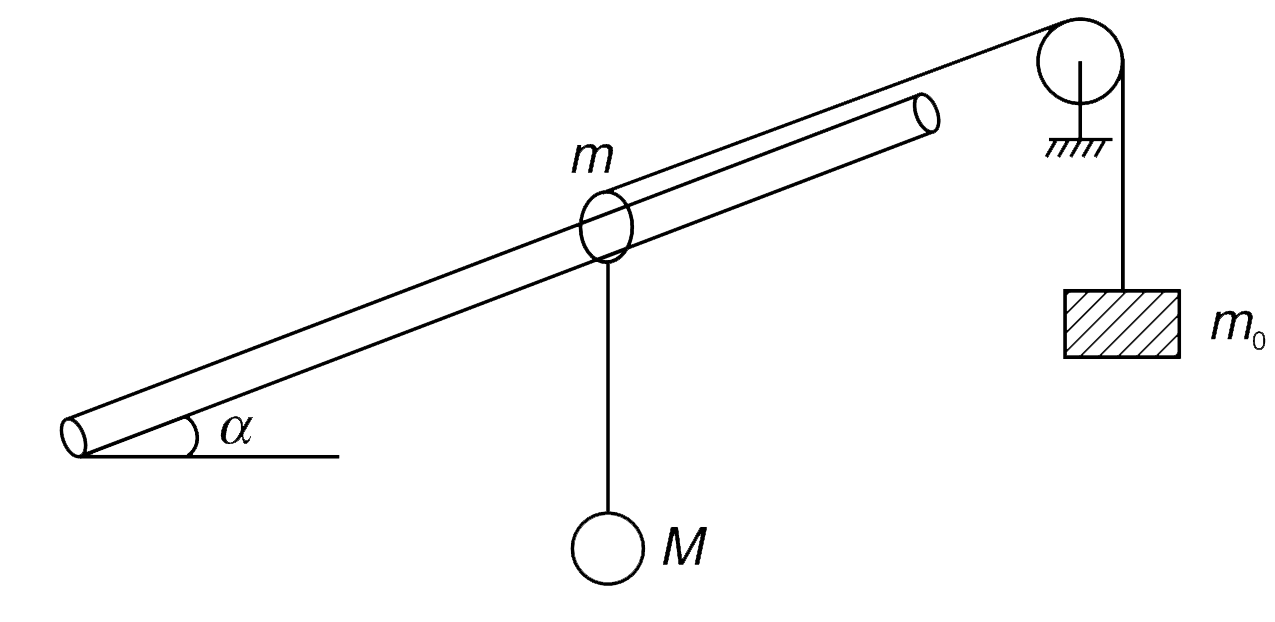
View Solution
Knowledge Check
In the system shown in figure m1>m2. System is held at rest by thread BC. Just after the thread BC is burnt.
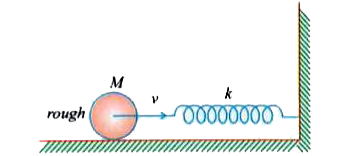 Aacceleration of m1 will be equal to zeroBacceleration of m2 will be downwardsCmagnitude of acceleration of two blocks will be non-zero and unequalDmagnitude of acceleration of both the blocks will be (m1−m2m1+m2)g
Aacceleration of m1 will be equal to zeroBacceleration of m2 will be downwardsCmagnitude of acceleration of two blocks will be non-zero and unequalDmagnitude of acceleration of both the blocks will be (m1−m2m1+m2)gIn the system shown in the figure m1>m2. System is held at rest by thread BC. Just after the thread BC is burnt :
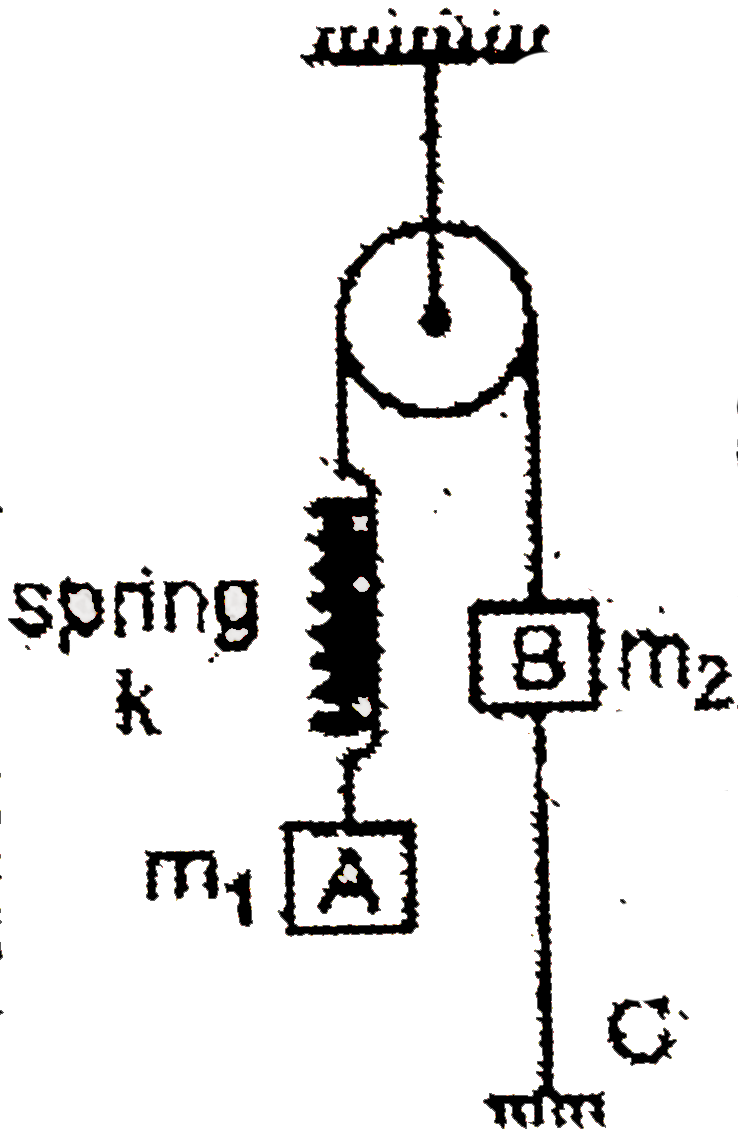 Ainitial acceleration of m2 will be upwardsBmagnitude of initial acceleration of both blocks will be equal to (m1−m2m1+m2)gCinitial acceleration of m1 will be equal to zeroDmagnitude of initial acceleration of two blocks will be non-zero and unequal.
Ainitial acceleration of m2 will be upwardsBmagnitude of initial acceleration of both blocks will be equal to (m1−m2m1+m2)gCinitial acceleration of m1 will be equal to zeroDmagnitude of initial acceleration of two blocks will be non-zero and unequal.In the system shown in figure m1>m2. System is held at rest by thread BP. Just after the thread BP is burnt :
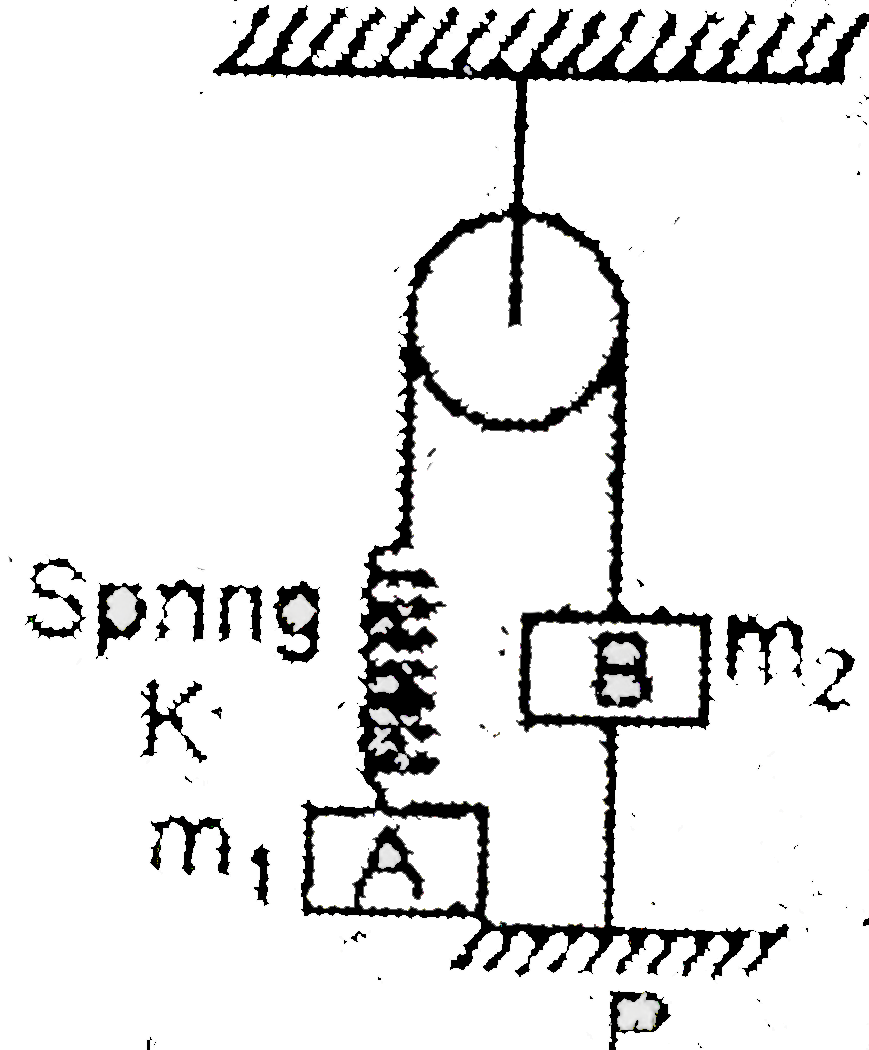 AMagnitude of acceleration of both blocks will be equal to (m1−m2m1+2m2)gBAcceleration of m1 will be equal to zeroCAcceleration of m2 will be upwardsDMagnitudes of acceleration of two blocks will be non-zero and unequal
AMagnitude of acceleration of both blocks will be equal to (m1−m2m1+2m2)gBAcceleration of m1 will be equal to zeroCAcceleration of m2 will be upwardsDMagnitudes of acceleration of two blocks will be non-zero and unequal
Three masses m1,m2andm3 are attached to a string -pulley system as shown . All the three masses are held at rest and then released If m3 remains at rest , then

View SolutionIn the system shown in fig. m1>m2 . The system is held at rest by thread BC. Now thread BC is burnt. Answer the following:
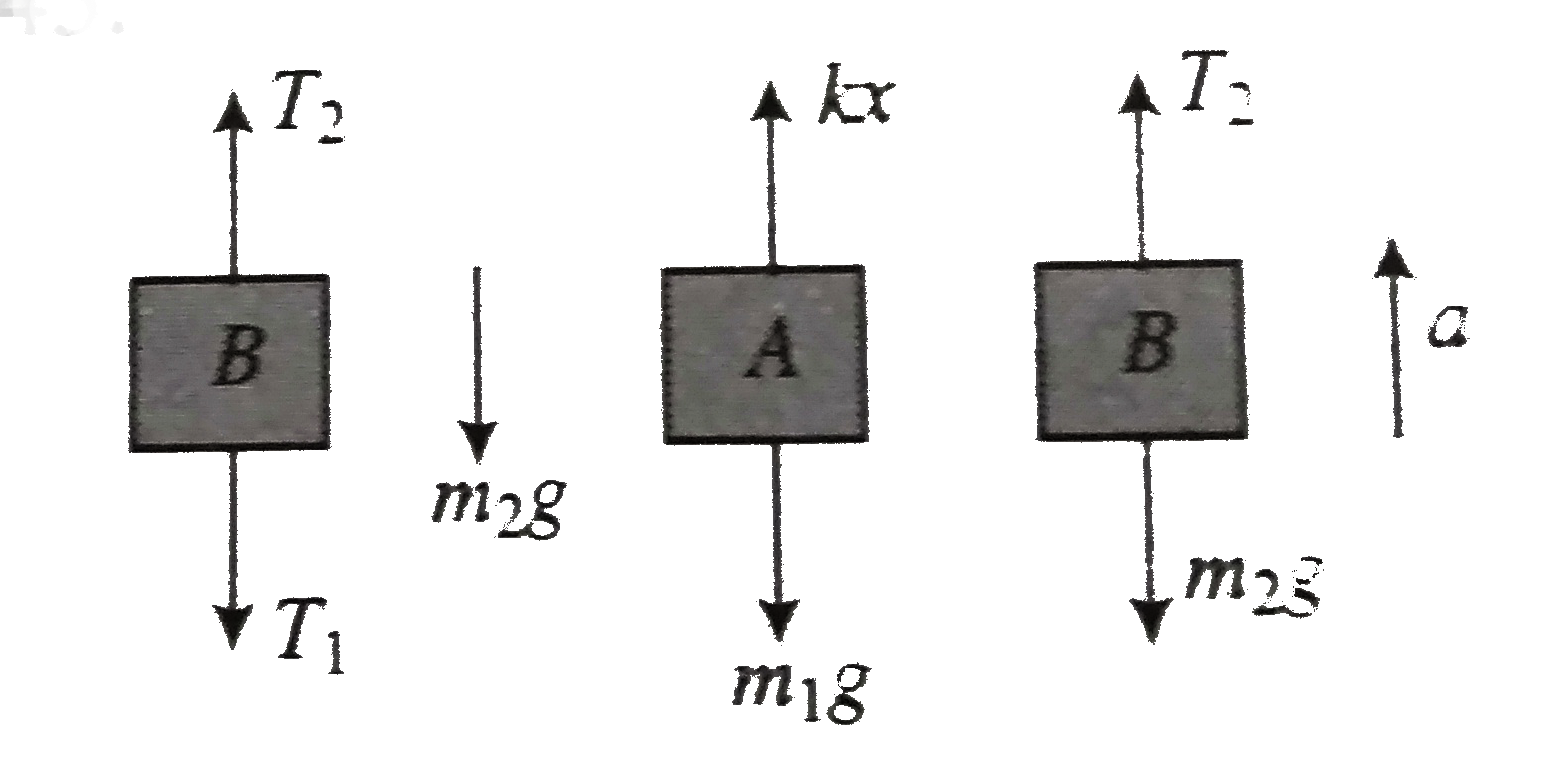
Just after burning the thread, what is the acceleration of m2?
View SolutionIn the system shown in fig. m1>m2 . The system is held at rest by thread BC. Now thread BC is burnt. Answer the following:
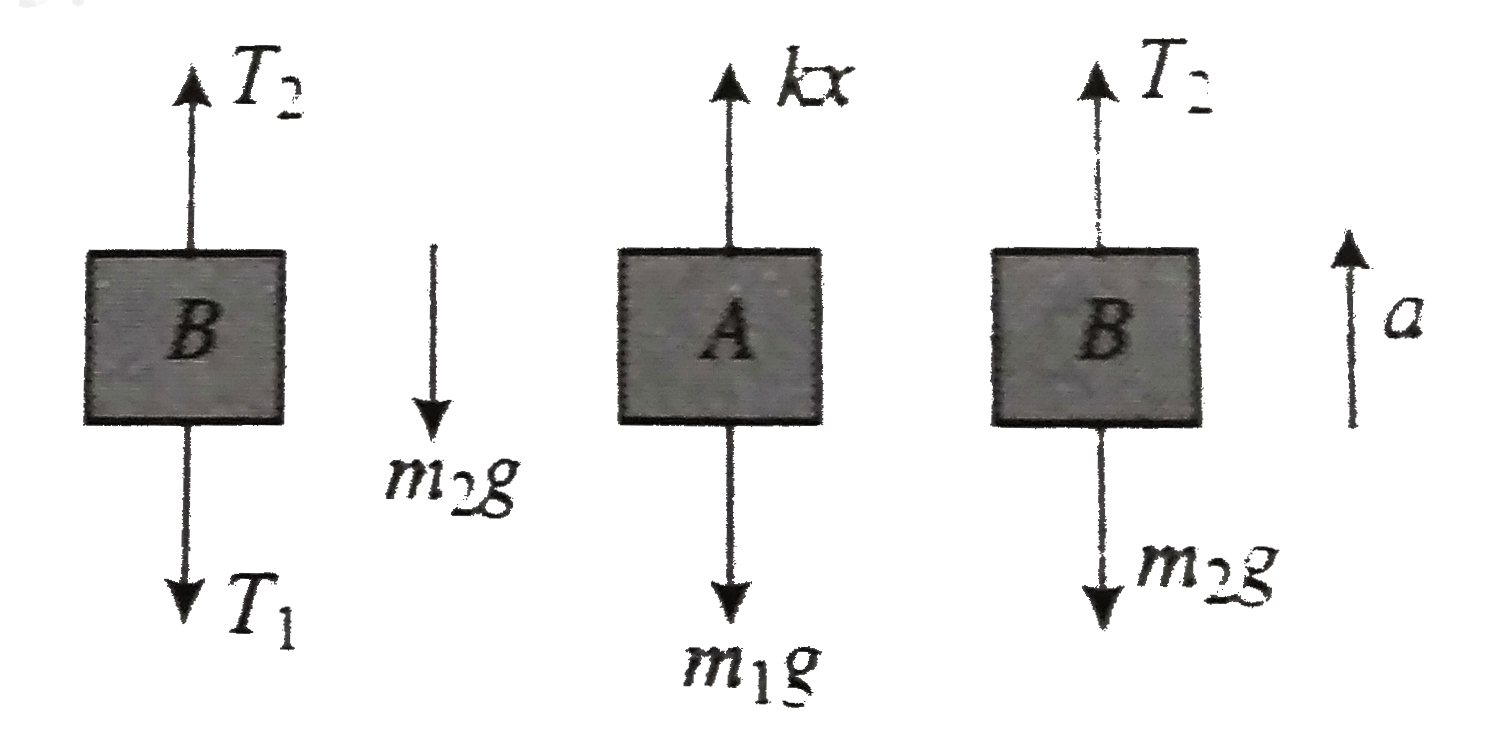
Just after burning the thread, what is the tension in the spring?
View SolutionIn the system shown in fig. m1>m2 . The system is held at rest by thread BC. Now thread BC is burnt. Answer the following:
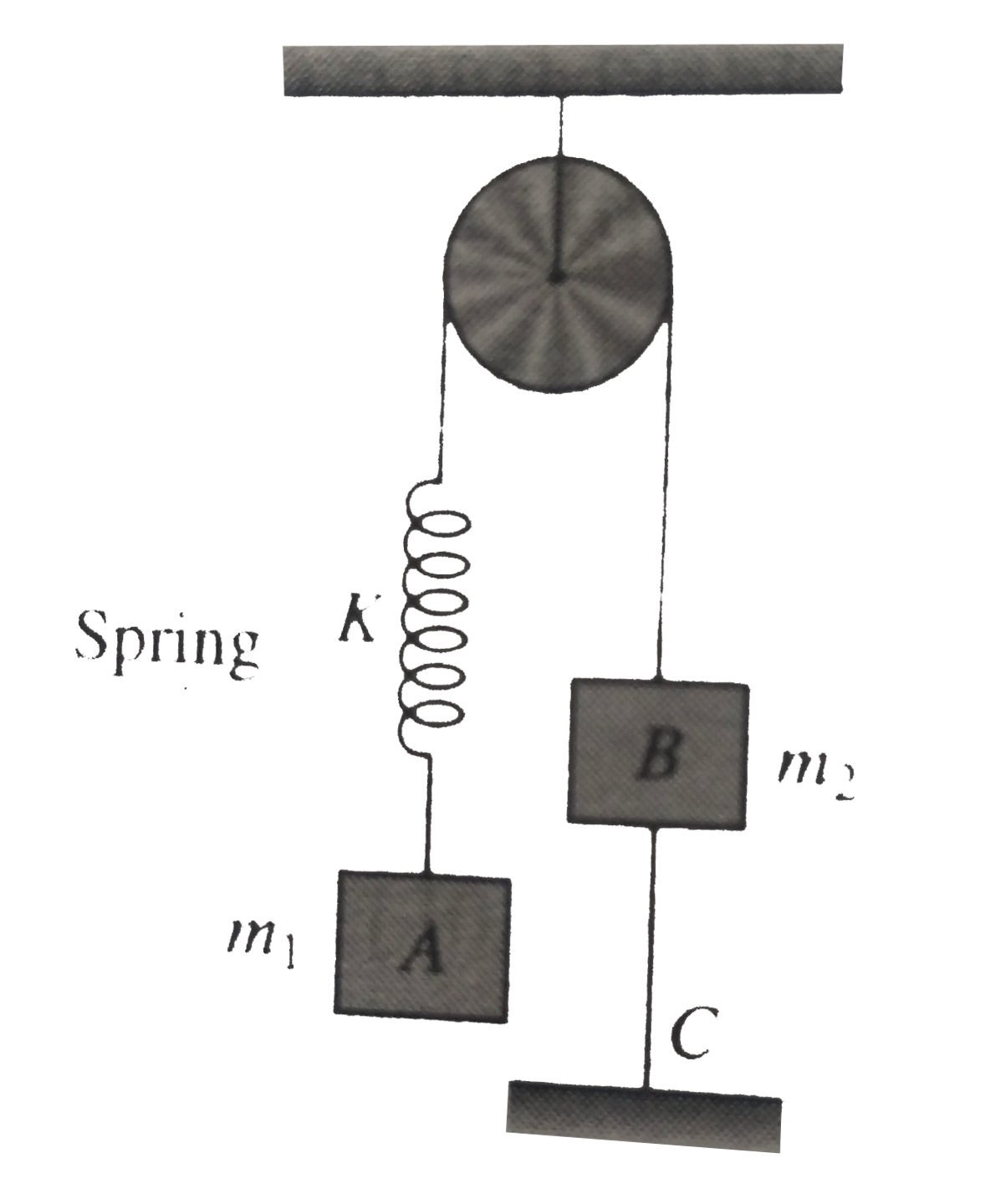
Before burnig the thread, what are the tensions in spring and thread BC, respectively?
View SolutionIn arrangement shown below, the thread pulley and spring are all massless and there is no friction anywhere. The system is in equilibrium. If thread connecting m4 is cut then just after thread is cut :

View Solution
